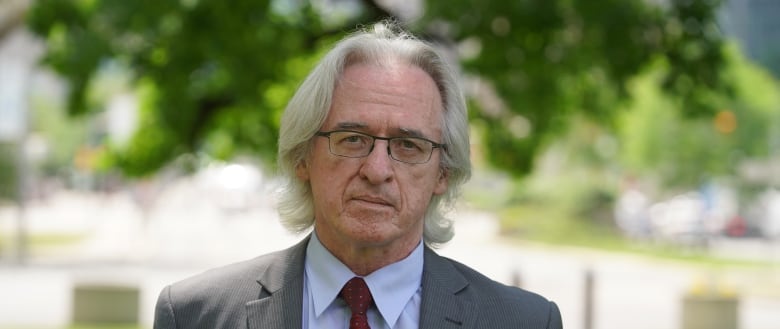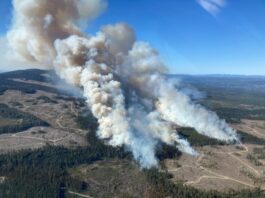
More than a year since she nearly died of COVID-19, registered nurse Rubina Khan is still not sure how she got infected, but she suspects it could be linked to airborne transmission — a risk Ontario’s health officials have only recently, albeit quietly, acknowledged.
Khan doesn’t recall anyone coughing in her presence while she cared for residents in a long-term care home in Southern Ontario last March. But by the time the 61-year-old found out she had contracted COVID-19, a coronavirus outbreak had taken hold that saw more than 60 of her colleagues and dozens of residents get sick as well.
At the time, personal protective equipment (PPE) had been restricted to staff working in a section of the home where residents were being quarantined as a precautionary measure after hospital visits. Elsewhere in the home, she said, “We did not have any access to the masks.”
In hindsight, she said, airborne particles carrying the virus could have played a part. “You’re breathing the same air.”
Since that first wave, there has been mounting evidence that COVID-19 is spread primarily through the air in tiny particles, called aerosols, that are expelled when a person talks, coughs or sneezes. However, much of Ontario’s broad public health guidance has remained focused on precautions, such as distancing and hand-washing, meant to curb transmission of a virus that spreads through heavy droplets at close range.
Critics say this guidance is outdated, and dangerous for many of those working on the front lines in the country’s hardest-hit province.
More than 540,000 Ontarians have been infected with COVID-19. Roughly 33,000 of those cases have been among health care workers, including those in long-term care settings.
While Ontario wasn’t alone in its approach to containing the virus, Mario Possamai says the province put people at risk because it failed to heed the warnings of its own past.
Possamai is a forensic investigator who played a key role in the Ontario SARS Commission, which examined Ontario’s response to the SARS outbreak in 2003. Recently, he has written reports for nurses’ unions about COVID-19.
“SARS has been called a dress rehearsal for COVID-19,” Possamai said.
He points out that a key takeaway from Ontario’s SARS Commission report, released in 2007, was that in the case of an outbreak of a new communicable disease, the chief medical officer of health should follow what’s called the “precautionary principle,” which means to play it safe.
In the face of COVID-19, he says, that should have meant enforcing airborne precautions for front-line workers, including improved ventilation and higher-level respiratory protection, such as N95 masks, designed to seal airways and block out most airborne particles.
“The precautionary principle was made for COVID-19,” Possamai said. “When the science is mixed, you err on the side of caution; you protect people. You wait until the science is more solid to decide whether you can lower precautions. But we didn’t do that.”
Since March 2020, Ontario public health guidelines have stated that droplet precautions are adequate to guard against COVID-19 transmission. According to the province, airborne precautions, such as N95 masks, are needed only by those performing aerosol-generating procedures, such as intubating a patient.
Provincial health authorities declined to comment for this story, or to answer any questions by email, citing a recent legal challenge against it filed by the Ontario Nurses Association (ONA) that is still before the courts. The ONA has asked Ontario’s Superior court to weigh in on Ontario’s obligation to explicitly acknowledge the airborne risk in its health directives. The court has yet to release a full judgment.
Vicki McKenna, provincial president of the Ontario Nurses’ Association, has been advocating for better access to high-level PPE since the start of the pandemic. Early on, she said, health care facilities were rationing supply in an effort to conserve equipment. After filing a number of grievances, the ONA took the province to court last April, demanding it order health care employers to give wider access to PPE.
McKenna says precautions on the front lines should have reflected emerging evidence of airborne transmission. Nurses, she said, were told, “don’t worry, you’re fine. Your surgical mask is good enough. It’s contact [transmission].”
As Canadians were banging pots and pans in support of health workers across the country, leading infectious disease experts repeatedly pronounced that COVID-19 wasn’t airborne.
David Fisman was among them. An epidemiologist and infectious disease expert at the Dalla Lana School of Public Health at the University of Toronto, he says that at the time, the idea that the coronavirus wasn’t airborne fit with a conventional understanding of how a virus spreads. By that measure, he said, COVID-19 seemed to be, “a disease that’s mostly spreading at short range, spreading via large respiratory droplets that don’t travel very far,” and that higher-grade masks, such as N95s, weren’t necessary in most cases to curb the spread.
But when Fisman studied early superspreader events, he said he saw things that didn’t add up. The virus proved not to be very infectious in some cases, he said. “And then on the other hand, in certain circumstances, it could just explode.”
Fisman found cases on cruise ships to be especially perplexing when trying to explain transmission through close contact.
“People being confined to their cabins were getting infected even though they weren’t in contact with anyone else who was known to be, in fact, infected. So, they were connected to each other by a ventilation system,” he said. “That should have told us it was aerosol.”
Knowing what he knows now, Fisman said Ontario should have started off by being “extra cautious” with regard to the risk posed by aerosols. “I actually feel sheepish, because I feel like a lot of this information was already in front of us last year. And I didn’t necessarily understand the implications.”
Those implications go beyond health care workers. Ontario’s crushing third wave in the winter of 2021 was fuelled largely by essential workers. The outbreaks, Possamai said, were “so preventable and avoidable.”
Had the risk been openly recognized, he said, there would have been increased emphasis on ventilation and air purification in indoor settings, and high-risk workers would have had immediate access to N95 respirators.
Possamai points out that there would have been associated costs to rethinking how transmission occurs indoors, and it would have meant, “admitting that your medical orthodoxy is wrong.”
Eventually, the Public Health Agency of Canada, and later Ontario, acknowledged the airborne risk of COVID-19 on their respective websites. However, there have been no clear changes in public guidance.
As the coronavirus recedes with increased vaccinations, McKenna says it’s time to entrench the lessons learned so that in the future, “we will not suffer the same kind of infections and deaths in many cases that we’ve seen in this province.”
Fisman has since worked with the ONA on hospital grievances to guarantee better access to full PPE, including N95 masks, to health care workers in the future. He says he wonders how many of the infections and especially deaths so far could have been prevented “with good science.”
“You know, I think you’re talking about thousands of people still being around who are not around now.”
As for Khan, she came close to dying. Now fully vaccinated, she’s back at the same nursing home she’s worked at for 21 years, but is doing desk work because she still can’t stand for more than a few minutes at a time.
There is plenty of higher-level PPE now, she said. And while she said she is grateful for her second chance, she’s sad and angry too. Sighing heavily, she said that, “If the preventive measures were taken in the beginning, [this] would be a different story.”
Watch full episodes of The National on CBC Gem, the CBC’s streaming service.












